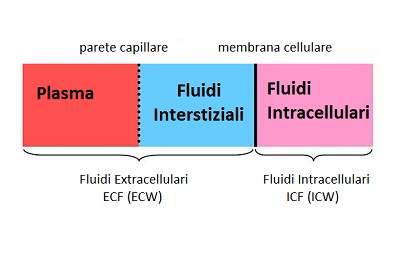Extracellular fluid is transported to all parts of the body in two different stages. The First stage entails movement of blood around and around the circulatory system. And the second movement Of fluid between the blood capillaries and the cells. All the blood in the circulation traverses the entire circuit of the circulation an average of once each minute at rest and as many as six times each minute when a person becomes extremely active.
What Does Extracellular Fluid Do?
As blood passes through the capillaries. continual fluid exchange occurs between the plasma portion of the blood and the interstitial fluid in the intercellular spaces surrounding the capillaries. Note that the capillaries are porous so that large amounts of fluid and its dissolved constituents can back and forth between the blood and the tissue spaces.. Almost no cell is located more ‘han to 50 microns from a capillary. which insure ditrusion of almost any substance the capillar. to the cell within a few seconds.Thus. the cellular fluid throughout the body, both that of the plasma and that in the interstitial spaces. is continually mixed and thereby maintains almost complete homogeneity.
The Liver and Other Organs that Perform Primarily Metabolic Functions. Not all substances absorbed from the gastrointestinal tract can be used in their absorbed form hy the cells. The liver changes the chemical compositions of many of these to more usable forms, and other tissues of the body the fat cells. the gastrointestinal mucosa. the kidneys, and the endocrine glands — help to modify the absorbed substances or store them until they are needed at a later time.
Musculoskeletal System.
Sometimes the question is asked: How does the musculoskeletal system fit into the homeostatic functions of the body.The answer to this is obvious and simple: Were it not for this system. the body could not move to the appropriate place at the appropriate time to obtain the foods required for nutrition. The musculoskeletal system also provides motility for protection against adverse surroundings. without which the entire body. and along with it all the homeostatic mechanisms, could be destroyed instantaneously.
